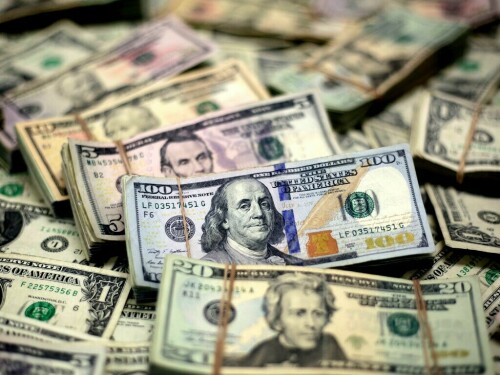Rupee Gains Marginally Against US Dollar
The Pakistani rupee experienced a slight increase against the US dollar, gaining 0.08% during Wednesday’s intra-day trading session in the inter-bank market.
As of 9:49 am, the local currency was trading at 280.80 against the US dollar.
On the previous day, Tuesday, the rupee concluded trading at 281.02.
Global Market Overview
On the international front, the US dollar remained stable on Wednesday. However, it is on track for its weakest monthly performance since November 2022. This is attributed to unpredictable US trade policies implemented during President Donald Trump’s administration, which have made the dollar vulnerable while strengthening the euro, yen, and Swiss franc.
The White House has backtracked on several occasions regarding the extensive tariffs initially introduced by Trump in early April. These tariffs had triggered a global stock market downturn and prompted investors to move away from the traditionally secure U.S. dollar and Treasury bonds.
On Tuesday, Trump formalized a couple of directives intended to lessen the impact of his automotive tariffs. These directives included a combination of credits and exemptions from other levies on materials.
Trump’s trade representatives also highlighted their initial agreement with a foreign trade partner, while US Treasury Secretary Scott Bessent indicated progress in tariff negotiations, suggesting upcoming deals with India and South Korea.
These developments have helped alleviate some concerns among investors and businesses regarding the potential economic repercussions of the tariffs, with indications suggesting that the duties could negatively affect growth and potentially increase inflation and unemployment.
Oil Prices Edge Lower
Oil prices experienced a slight decrease in early Asian trading on Wednesday. This decline was influenced by President Donald Trump’s inconsistent tariff policies, which have raised concerns about a weakening global economic growth and its impact on fuel demand.
Brent crude futures declined by 17 cents, or 0.26%, reaching $64.08 per barrel by 0015 GMT. Similarly, U.S. West Texas Intermediate crude futures decreased by 12 cents, or 0.2%, to $60.3 a barrel.
Both benchmarks registered their lowest settlement prices since April 10 in the prior session.
A Reuters poll suggests that Trump’s import tariffs into the U.S. have increased the likelihood of a global economic recession this year.
China, which has been significantly impacted by the tariffs, has responded with its own levies on U.S. imports, intensifying a trade conflict between the world’s two largest oil-consuming nations.



Comments (0)
No comments yet. Be the first to comment!
Leave a Comment